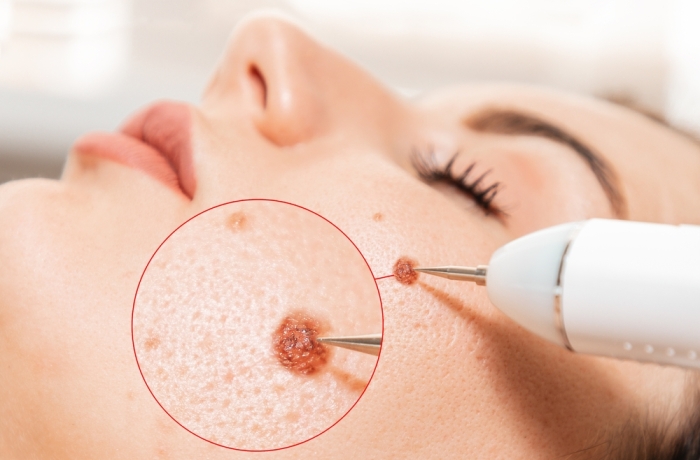Moles are common skin growths that can develop anywhere on the body. While most moles are harmless, some can be unsightly, uncomfortable, or even cancerous. Mole removal is a common dermatological procedure that can help address these issues. In this article, we will provide a comprehensive guide for patients considering mole removal, including information about the procedure, alternatives, who needs it, types of moles, requirements for treatment candidates, how it's performed, recovery period, and more.
Mole removal is a procedure that involves the removal of a mole from the skin. Moles are clusters of pigmented cells that can vary in size and shape. The reasons for mole removal can vary, from a concern for the appearance of a mole to discomfort or irritation caused by its location. The most common types of moles are junctional, compound, and dermal. There are several methods of mole removal, including surgical excision, laser therapy, cryotherapy, and chemical peels.

While mole removal is a common procedure, there are alternatives that can be used to treat certain types of moles. Laser therapy is one alternative that can be used to remove moles without cutting the skin. Cryotherapy involves freezing the mole with liquid nitrogen. Chemical peels can also be used to remove the top layer of skin, including the mole.
 Conclusion
ConclusionMole removal is a common dermatological procedure that can help address concerns related to the appearance or discomfort caused by moles. Patients should choose a reputable clinic with experienced physicians and follow the pre and post-operative instructions carefully to ensure a successful procedure and recovery. By understanding the risks, alternatives, requirements, and recovery process associated with mole removal, patients can make informed decisions about their treatment options.
Mole removal may be recommended for individuals with atypical moles, moles that cause discomfort or irritation, or moles that affect appearance. Individuals with a history of skin cancer or a family history of skin cancer may also be good candidates for mole removal.

Before undergoing mole removal, patients should meet certain requirements to ensure the safety and effectiveness of the procedure. These requirements may include having no active infections in the treatment area, no history of abnormal scarring, no history of bleeding disorders, and other considerations for candidacy.

Preparing for mole removal typically involves a pre-operative consultation with the physician. Patients may be advised to discontinue certain medications, arrange transportation to and from the clinic, and follow other instructions to ensure a successful procedure.
Mole removal is typically performed under local anesthesia, which means that the patient is awake but the treatment area is numbed. There are several methods of mole removal, including excision with a scalpel, excision with a punch biopsy tool, excision with a laser, and more. The specific method used will depend on the size, location, and type of mole being removed.

The mole removal procedure typically involves several steps. First, the treatment area is cleaned and sterilized. Next, local anesthesia is applied to the area. Once the area is numb, the mole is removed using the chosen method. After the mole has been removed, the wound is closed using stitches, adhesive strips, or cauterization. Patients will receive detailed instructions for post-operative care, including how to care for the wound, when to remove the dressings, and when to schedule follow-up appointments.
As with any medical procedure, there are risks associated with mole removal. These risks may include bleeding, infection, scarring, and other complications. Patients should discuss the potential risks with their physician before undergoing the procedure.
HealTrip Global takes several precautions to prevent risks and complications. These precautions include using sterile equipment, proper wound closure techniques, and post-operative monitoring and care instructions. Patients should choose a reputable organization like HealTrip Global that follows strict safety protocols and has experienced physicians to minimize the risks associated with mole removal.
After mole removal, patients can expect some discomfort, swelling, and bruising in the treatment area. The recovery period may vary depending on the size and location of the mole and the method used for removal. Patients may need to avoid certain activities, such as strenuous exercise, for a few weeks after the procedure. The physician will provide detailed instructions on how to care for the wound and what to expect during the recovery period.
Patients should avoid exposing the treated area to direct sunlight and wear protective clothing when outside. Swimming, using hot tubs or saunas, and applying makeup or lotions to the treated area should also be avoided until the wound has healed completely. Patients should follow the physician's instructions carefully to ensure a smooth and successful recovery.